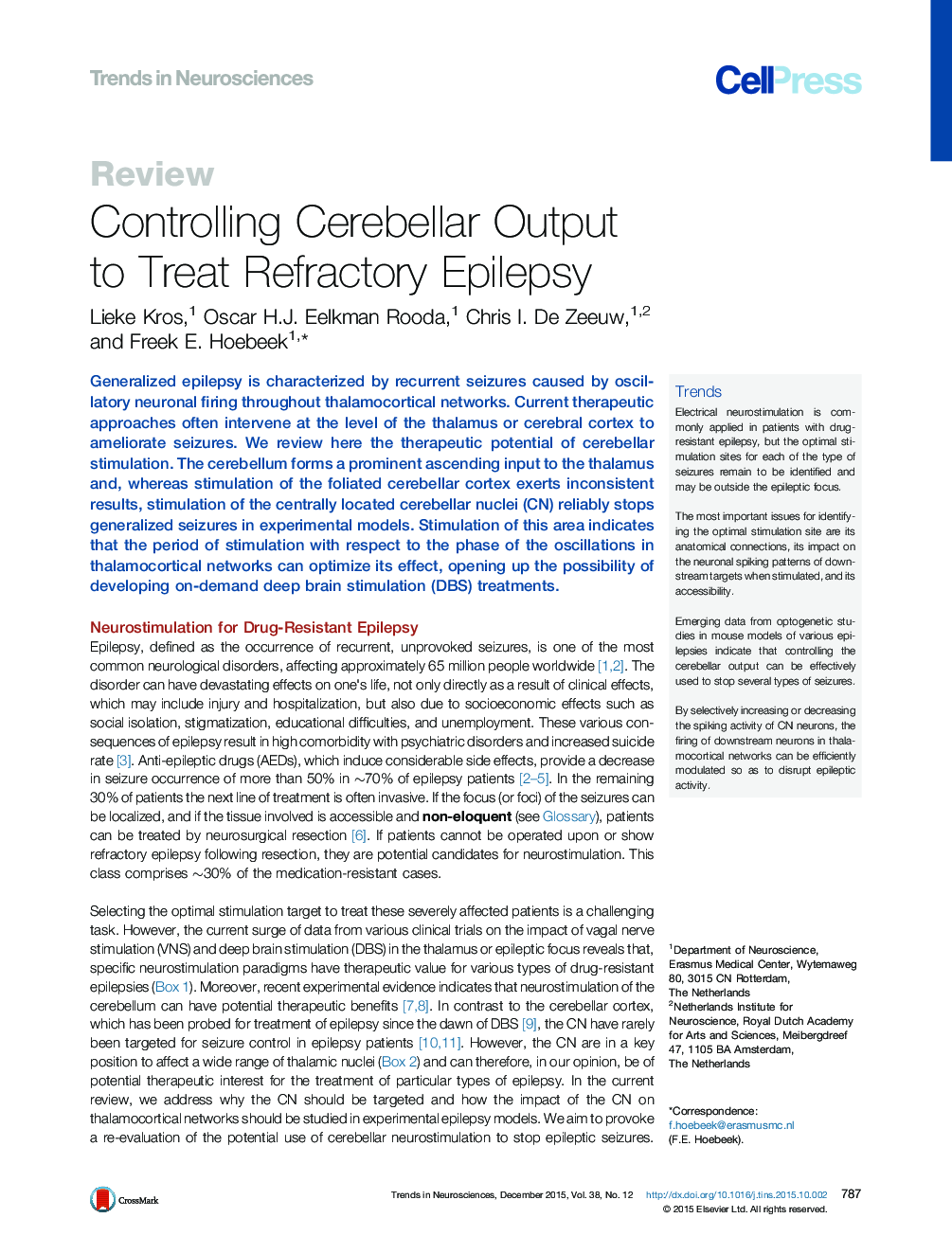| Article ID | Journal | Published Year | Pages | File Type |
|---|---|---|---|---|
| 4354210 | Trends in Neurosciences | 2015 | 13 Pages |
Generalized epilepsy is characterized by recurrent seizures caused by oscillatory neuronal firing throughout thalamocortical networks. Current therapeutic approaches often intervene at the level of the thalamus or cerebral cortex to ameliorate seizures. We review here the therapeutic potential of cerebellar stimulation. The cerebellum forms a prominent ascending input to the thalamus and, whereas stimulation of the foliated cerebellar cortex exerts inconsistent results, stimulation of the centrally located cerebellar nuclei (CN) reliably stops generalized seizures in experimental models. Stimulation of this area indicates that the period of stimulation with respect to the phase of the oscillations in thalamocortical networks can optimize its effect, opening up the possibility of developing on-demand deep brain stimulation (DBS) treatments.
TrendsElectrical neurostimulation is commonly applied in patients with drug-resistant epilepsy, but the optimal stimulation sites for each of the type of seizures remain to be identified and may be outside the epileptic focus.The most important issues for identifying the optimal stimulation site are its anatomical connections, its impact on the neuronal spiking patterns of downstream targets when stimulated, and its accessibility.Emerging data from optogenetic studies in mouse models of various epilepsies indicate that controlling the cerebellar output can be effectively used to stop several types of seizures.By selectively increasing or decreasing the spiking activity of CN neurons, the firing of downstream neurons in thalamocortical networks can be efficiently modulated so as to disrupt epileptic activity.
